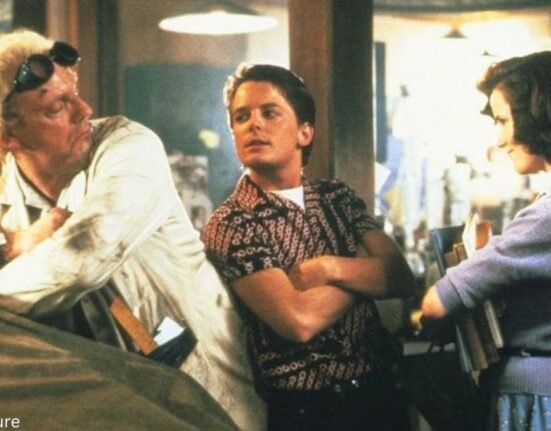Acting is largely portrayed as a glamorous profession of fame and fortune, but behind the spotlight lies a challenging craft requiring rigour, skill and uncommon psychological abilities. Beyond surface charisma, an actor’s work taps into deeper parts of human cognition and emotion to effectively inhabit roles and compellingly portray fictitious experiences on cue. So what does the psychology of an actor look like and which mental processes may separate great thespians from conventional people off-stage? By examining existing research around actors’ multifaceted minds and methods, we gain a unique insight into this complex creative field.
Read More: The Spotlight for Mental Health: Understanding the Unique Stress Actors Face
Dissociation and “Flow” Mental States
First and foremost, studies suggest exceptional actors consciously activate altered states of consciousness like dissociation to separate from their normal identity while acting. Through intense focus, they can absorb themselves into story worlds and detach from real environment stimuli unrelated to the scene.
Experts compare this to athletes leveraging “flow” mental states for peak performance, losing self-awareness instead of total present absorption. Neuroimaging scans reveal suppressive brain activity in regions involving executive function and self-processing when actors embody roles, indicating a shift away from regular cognitive patterns. This immersive dissociation into imaginative realities enables roles to feel vividly real and reactive on stage.
Working Memory and Cognitive Flexibility
Current research also proposes actors excel in deploying working memory and executive control while simultaneously juggling multi-threaded demands at the moment. Like improvisational experts, they exhibit expansive cognitive flexibility allowing dynamic idea generation tethered to contextual constraints around storyline, blocking and layered emotional objectives.
This mental multitasking helps integrate verbal lines, non-verbal expressions, in-scene guidance and ever-changing scene partner reactions into compelling dramatic experiences. Additionally, actors appear prone toward visual-spatial learning styles, constructing richly detailed mental models of performance spaces and scenes to become fully entrenched in imaginative environments.
Empathy, Emotional Regulation and Creativity
The intrinsic ability to understand diverse psychological experiences outside one’s own likely also plays a driving role in separating extraordinary actors from common crowds. Through elevated empathy and cognitive perspective-taking lenses, talented performers access emotional landscapes well beyond themselves.
Read More: “Daddy Issues” What is it actually?
Research on actor training techniques documents significant improvements in empathy inventories compared to non-acting control groups. Of course, empathetic prowess alone does not suffice without equal mastery over voluntarily accessing and conveying emotions on demand as scripts dictate.
Actors consciously marshal their feelings with precise timing, contextually accurate expression and optimal intensity for audience impact. This granular emotional control indicates robust self-regulatory skills. Adaptive creativity additionally enables ever-evolving fresh approaches to keep characterizations engaging across repetitive takes and long-running theatrical productions without growing stale or formulaic over significant durations.
Read More: Barbie – A Psychological Overview of the Movie
Personality Traits and Attraction to Acting
Attempts to define a universal actor personality composite have largely proven difficult given the incredible range of roles across medium and genre. However, useful generalizations exist – for instance, many thespians demonstrate increased extraversion driving their attraction to performance visibility, meaning they feel energized gaining attention versus shrinking without audiences.
However, introverted actors adept at playing reticent, socially withdrawn personalities also abound at the highest echelons. While outgoing qualities suit the broadcast nature of acting, voluntary controlled inhibition serves equally crucial for subtle or internalized roles. Beyond binary introversion-extraversion traits, Successful performers commonly display openness reflecting their artistic leanings and intellectual curiosity fueling perpetual self-growth in understanding human experiences necessary to truthfully actualize multifarious characters beyond themselves. They also tend strongly conscientious – devoted perfectionists pouring intense dedication into their demanding craft.
Acting as Empowerment
For some performers, embracing fictitious roles provides liberation from self-consciousness or mundane realities. Actors driven by shyness may feel freed through theatrical anonymity enabling behavior beyond their usual comfort zone. The permission to safely experience often stifled aspects of themselves empowers cathartic exploration or escapist fantasy fulfilment.
Read More: 8 Compelling Movies and TV Series That Explore Mental Health Themes
From the disinhibiting effects of costumes and sets to scripts expressly permitting vulnerable emotionality, acting controversially provides life textures to depressed or constrained offstage selves yearn. Some clinical frameworks even incorporate role play therapeutically, hinting at broader psychological benefits acting accessibly offers.
Motivations Toward Performance
Just as wide-ranging roles exist across the acting canon, performers’ underlying motivations differ greatly. While pop culture dwells on the pursuit of fame, many simply yearn for artistic purpose over notoriety, financial success or external validation. Some channel past adversity into connective storytelling, leveraging trauma responsibly through careful compartmentalization.
Read More: Psychology Behind Motivation
Others seek community belonging and chosen families welcoming free emotionality. Some live vicariously through characters more interesting than themselves. And a rare few chase the addictive rush of applause masking inner voids. Teasing apart these poignant, less visible drivers offers a more humanistic perspective toward actors beyond reductive stereotypes.
Summing Up
In aggregate, research clues into actors manifesting a layered suite of cognitive, emotional and personality-based attributes that enable their creative art form. Through expansive imagination, cognitive flexibility, dissociation capacity, emotional attunement, experiential diversity and dogged artistic commitment, talented performers transport audiences through stories untethered from reality’s constraints.
Yet performance magic relies on psychological mastery rather than inexplicable gifts randomly bestowed at birth. And while on-screen depictions ignore these complex inner workings, mental processes definitively separate iconic acting from flat caricatures or amateur endeavours – granting a window into the essence of craft behind the compelling drama. Perhaps audiences, critics and actors themselves should equally evaluate technical execution as the observable translation of layered psychological feats consciously marshalled behind the scenes in service of cinematic art.
Read More Articles on Psychologs +
- Influence of Horror Movies on Sleep and Dreams
- Matthew Perry: The One where We lost Him
- Behind the Laughter: Robin Williams
- Dark Humour: The Fine Line Between Comedy and Insensitivity
- The Psychology Behind Viral Trends and Why We Follow Them
- The Obsession of K-pop Culture in India and its Psychological Impacts
- The Antics of the Indian Movies – A Psychological View
- OTT OVERLOAD: Psychology Behind The OTT Content Consumption
References +
- Thomson, P., & Jaque, S.V. (2011). Testimony and acting: Rising to the challenge. The Journal of Analytical Psychology, 56(3), 339–353.
- Sowden, P. T., Clements, L., Redlich, C., & Lewis, C. (2015). Improvisation facilitates divergent thinking and creativity: Realizing a benefit of primary school arts education. Psychology of Aesthetics, Creativity, and the Arts, 9(2), 128–138.
- Goldstein, T. R. (2009). The pleasure of unadulterated sadness: Experiencing sorrow in fiction, nonfiction, and “in person”. Psychology of Aesthetics, Creativity, and the Arts, 3(4), 232.
- Thomson, P., Keehn, E.B., & Gumpel, T.P. (2009). Generators and interpreters in a performing arts population: Dissociation, trauma, fantasy proneness, and affective states. Creativity Research Journal, 21(1), 72-91.













Leave feedback about this